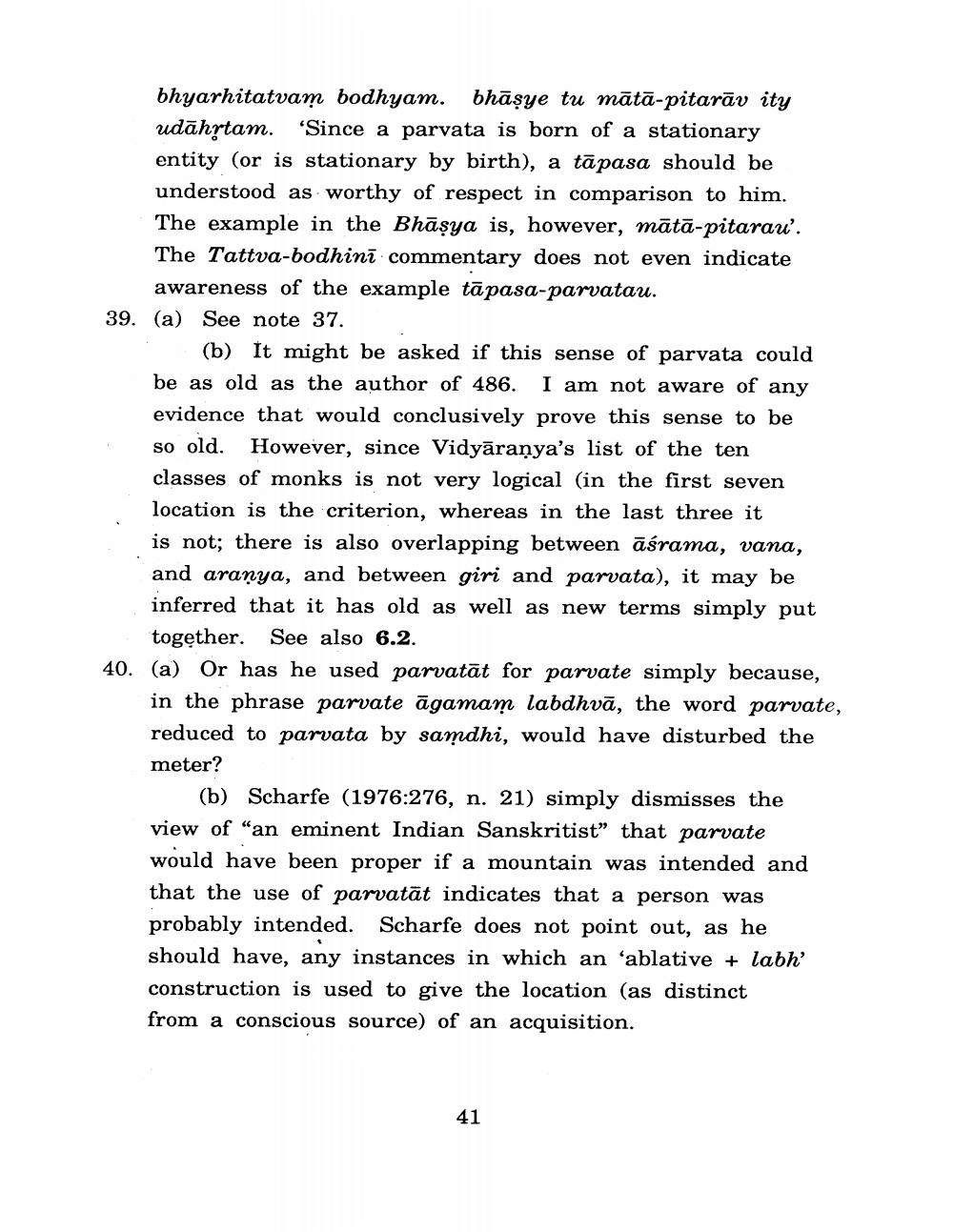________________
bhyarhitatvam bodhyam. bhāsye tu mātā-pitarāv ity udāhrtam. 'Since a parvata is born of a stationary entity (or is stationary by birth), a tāpasa should be understood as worthy of respect in comparison to him. The example in the Bhāşya is, however, mātā-pitarau'. The Tattva-bodhinī commentary does not even indicate
awareness of the example tā pasa-parvatau. 39. (a) See note 37.
(b) It might be asked if this sense of parvata could be as old as the author of 486. I am not aware of any evidence that would conclusively prove this sense to be so old. However, since Vidyāranya's list of the ten classes of monks is not very logical in the first seven location is the criterion, whereas in the last three it is not; there is also overlapping between āśrama, vana, and aranya, and between giri and parvata), it may be inferred that it has old as well as new terms simply put
together. See also 6.2. 40. (a) Or has he used parvatāt for parvate simply because,
in the phrase parvate āgamam labdhvā, the word parvate, reduced to parvata by samdhi, would have disturbed the meter?
(b) Scharfe (1976:276, n. 21) simply dismisses the view of “an eminent Indian Sanskritist” that parvate would have been proper if a mountain was intended and that the use of parvatāt indicates that a person was probably intended. Scharfe does not point out, as he should have, any instances in which an 'ablative + labh construction is used to give the location (as distinct from a conscious source) of an acquisition.
41




